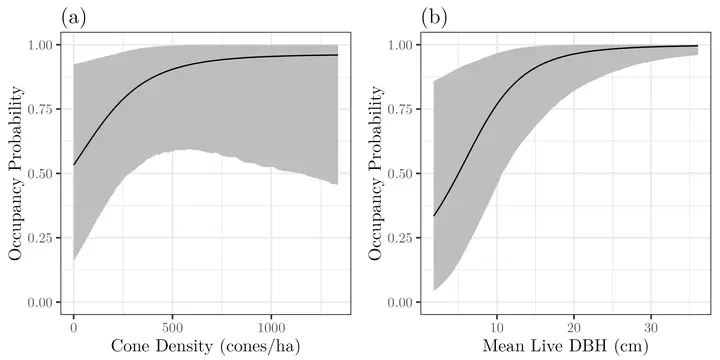Hierarchical modeling applications

The Statistical Ecology and Forest Science Lab works closely with colleagues across the world to apply our modeling developments to different management, conservation, and ecological questions. Working with researchers from different areas of expertise (e.g., statistics, computer science, ecology, forestry), careers (e.g., government, non-profit agencies, academia, industry), and backgrounds helps broaden our perspectives on how our modeling developments are being used by the broader community, and helps us learn how to better communicate our methodological developments and associated findings to different audiences.
With collaborators at the University of Arkansas, we used multi-species occupancy models within a scenario planning framework to understand the effects of multiple woodland restoration outcomes on bird communities in Arkansas, USA (Roberts et al. 2024 Restoration Ecology). With collaborators at the University of Minnesota, we applied multi-season spatial occupancy models to better understand the factors influencing both the spread and detection of an invasive aquatic plant (starry stonewort) across a suite of lakes in Minnesota and Wisconsin, providing important information for early detection and rapid response programs (Bajcz et al. 2024 Scientific Reports). With colleagues at Michigan State University, we used multi-species hierarchical distance sampling models to assess how an elevation gradient and within-habitat segregation contribute to the co-existence of ecologically similar bird species in east-central Africa (Ayebare et al. 2023 Proc B).
The Statistical Ecology and Forest Science Lab will continue to work with international collaborators to apply hierarchical modeling tools to help address interesting and important ecological and management questions.